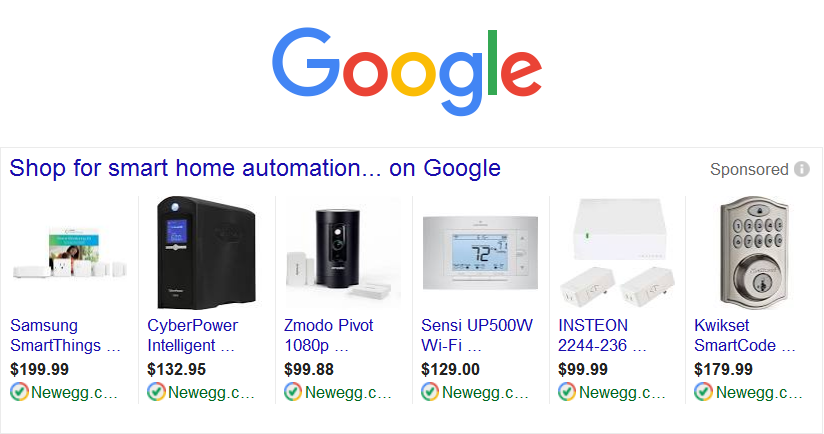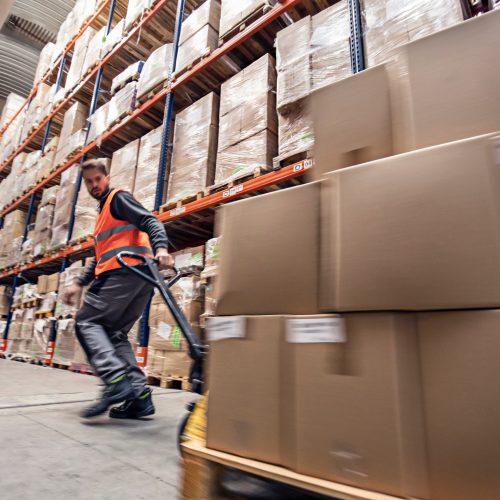Cross-border sales are growing rapidly, which country is right for your business?
Here’s the deal, modern consumers are savvier these days. The speed in which they are able to search, review, and buy products are made seamless because of where retail is happening–online. eMarketer estimates that ecommerce will account for 14.6% of total worldwide retail sales, topping $4 trillion by 2020. But we already know that. So what’s the real story? According to Forrester, cross-border transactions will outpace domestic transactions at a compound rate of 17% between 2017 and 2022.

In 2016, the Asia Pacific region accounted for the majority of ecommerce sales at 12.1%, followed by Western Europe and North America at 8.3% and 8.1%, respectively. China drives most of the sales in the Asian Pacific region, their ecommerce sales alone are projected to top $1.9 trillion by 2019. Other countries such as the U.S., UK, Japan, and Germany will experience modest growth through 2019. A large portion of those global transactions are happening on marketplaces.
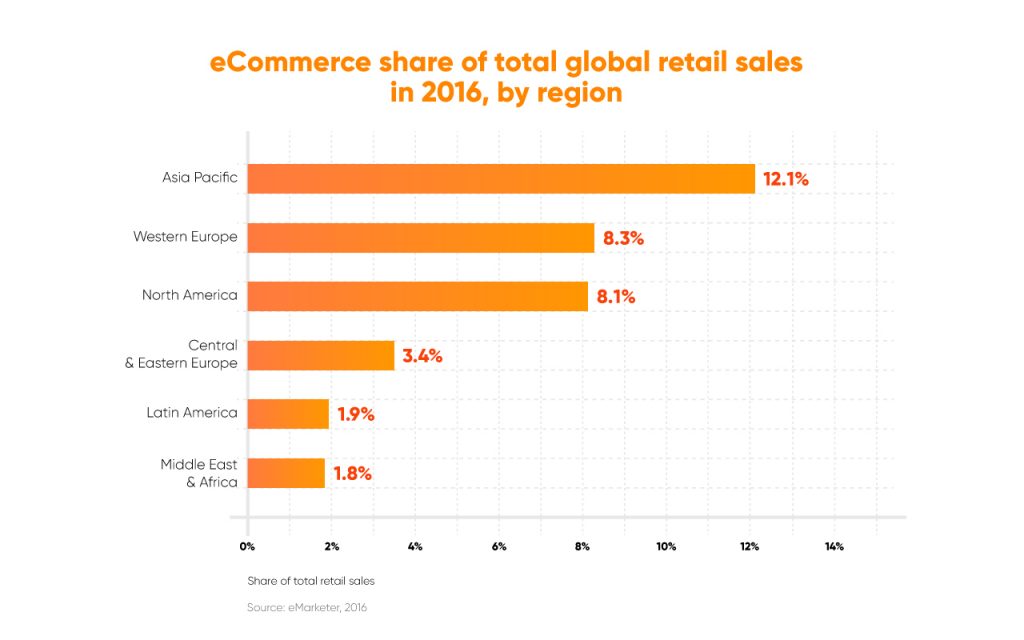
Understanding these market factors can save you from a lot of heartache
Now before you grab a map and start pinning every country you’ve ever heard of or traveled to, begin your preparation by surveying the lay of the land. The opportunities are there, but determine what the right market conditions are for you. Consider the following:
- Compatibility to your business – Assess your current product portfolio and the markets you want to take them to. Is there a demand for those items in a particular country? A great way to test this is check if your competitors are out there, which brings up the next point.
- E-commerce market size – Demographically speaking, examine how large is their working population, how much of their population purchases things online, and just how competitive are the relevant industries. Is it saturated or do you have enough space to operate?
- E-commerce growth rate – How much of the total retail sales are coming from ecommerce? Select markets where their internet penetration is increasing. For example, many Asian countries were early adopters of online and mobile shopping, and now many of those countries have a robust online shopping ecosystem in place.
- Cross-border volume – Target countries that demand international goods. Within the ecommerce sector, how much of those sales are cross-border?
- Market readiness – A market can have the right shopper demographics, but a common deterrent is infrastructure. How does that country support logistics and fulfillment? What payment methodology is accepted?
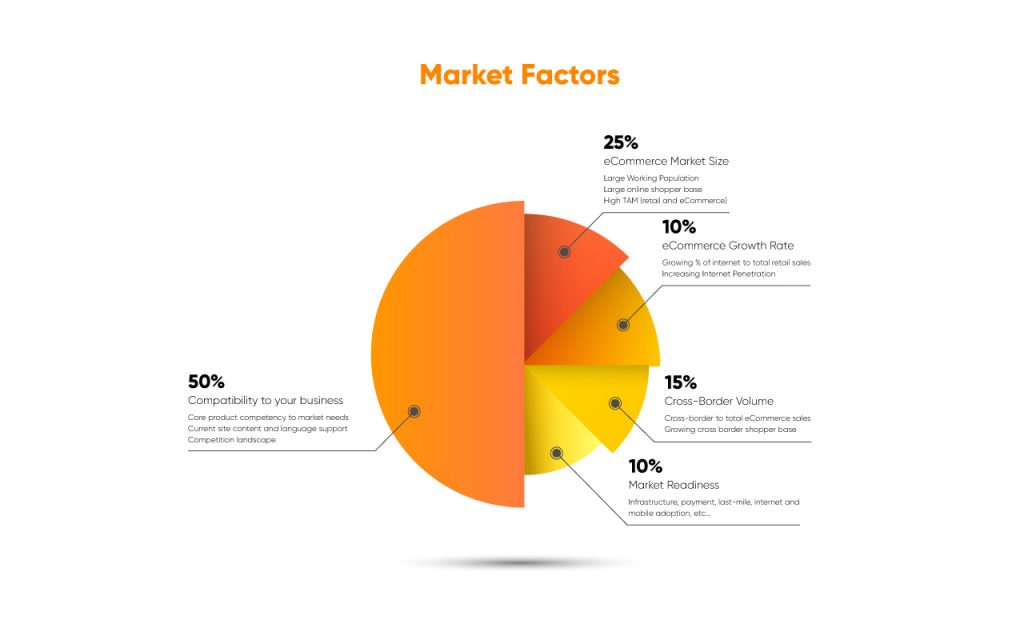 Evaluating a country by these metrics will give you insights on if the country’s retail environment is conducive for cross-border. Once that’s figured out the next question you ask yourself is how can you streamline operations?
Evaluating a country by these metrics will give you insights on if the country’s retail environment is conducive for cross-border. Once that’s figured out the next question you ask yourself is how can you streamline operations?
Marketplaces reduce cross-border complexities for sellers and make global expansion scale-able
The devil is in the details and often times operational details bog down sellers from focusing on developing their business and selling. These are some ares where marketplaces minimize common barriers to entry.
- Marketplaces advocate friction-less payment processes. Globally, credit cards are the most common payment method—more common than the next two popular payment methods combined, PayPal and debit cards. PayPal is a close second to credit cards in the more developed countries and is widely used in most other countries with the exception of Asia. The majority of Asia hardly use PayPal, compared to Alipay and WeChat. India is the exception, where consumers prefer to pay cash on delivery (COD) or by debit card. All these nuances, right? This is where leveraging a marketplace simplifies the entire process. Instead of shopping around trying to figure out which payment method or vendor to use, marketplaces make those selections readily available. Additionally, they’ll have partnerships with payment vendors that offer total customization when it comes to how and when you receive your funds, giving you complete control. For example, you can secure your sales funds, leave them in that account, and convert them to your local currency when the exchange rates are more favorable. Another big benefit comes with reduced transaction fees, which easily adds up when you’re selling overseas.
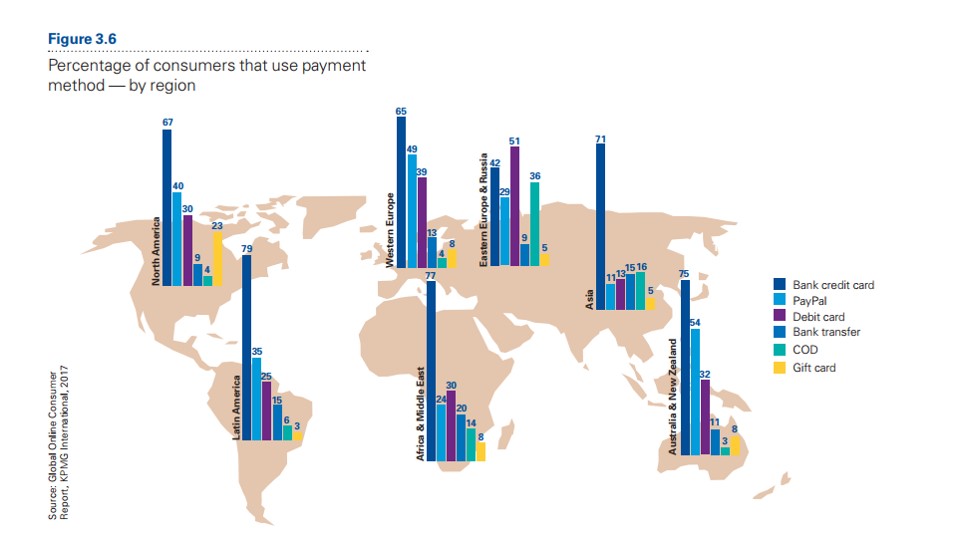
- Marketplaces provide a robust and scale-able logistics infrastructure in place. Not all delivery options are equal. Across the board, consumers and sellers agree that timely delivery, seamless returns, and exceptional customer service drive branding and garner repeat buyers. But how that looks within each country is different. For example, French consumers prefer both direct home delivery and collection points contrary to U.S. consumers where the majority prefer direct delivery to their home with little interest in collection points. When it comes to returns, 57% of shoppers expect that they can return their online orders to a store for a refund or a replacement, where applicable. Prospective cross-border sellers are advised that they leverage third-party services or a marketplace’s if they don’t have their own in place. Often times it’s more cost-effective, but more importantly it’s one less complexity they deal with. This is one area that can easily spiral out of control resulting in poor buying experiences.
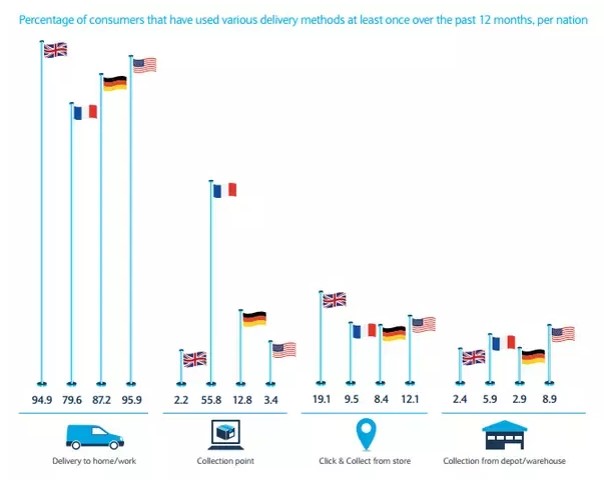
- Marketplaces localize your marketing and merchandising strategy. Similar to the previous point, it’s all about the consumer’s buying experience. Make it easy for them by translating your product content listing in their local language. Engage them by creating content and copy that resonates with their buying behavior. For example, North American consumers prefer a minimalist page design made up of high quality imagery, but not a lot of copy. However, Asian consumers prefer that every detail of a product be included. Localization requires an accessible team that ensures your brand story is accurately portrayed while implementing local best practices. A marketplace team can do just that.
- Marketplaces are safe testing grounds. The idea is to take your product to a country that’s representative of that region and also isn’t the most saturated. By doing so, you get a gauge of how receptive shoppers are to your product assortment and promotional offerings for that country and region. You also gain insights on which marketing channels perform better as well. Here’s the catch, find out what the costs are. Not all marketplaces are transparent about total costs. Some sellers have been duped to believing that they are being charged a single commission rate only to find there are additional hidden fees on top of that. If you’re looking for transparency consider Newegg’s Global Seller program where the services are wrapped into one commission fee.
Taking your sales cross-border can sound daunting at first, but with a little research and help from key partners, you can select the right markets, access the right services, and scale your business globally, seamlessly.
If you’re interested in taking your sales cross-border, learn how Newegg Global tailors a program that fits you.






